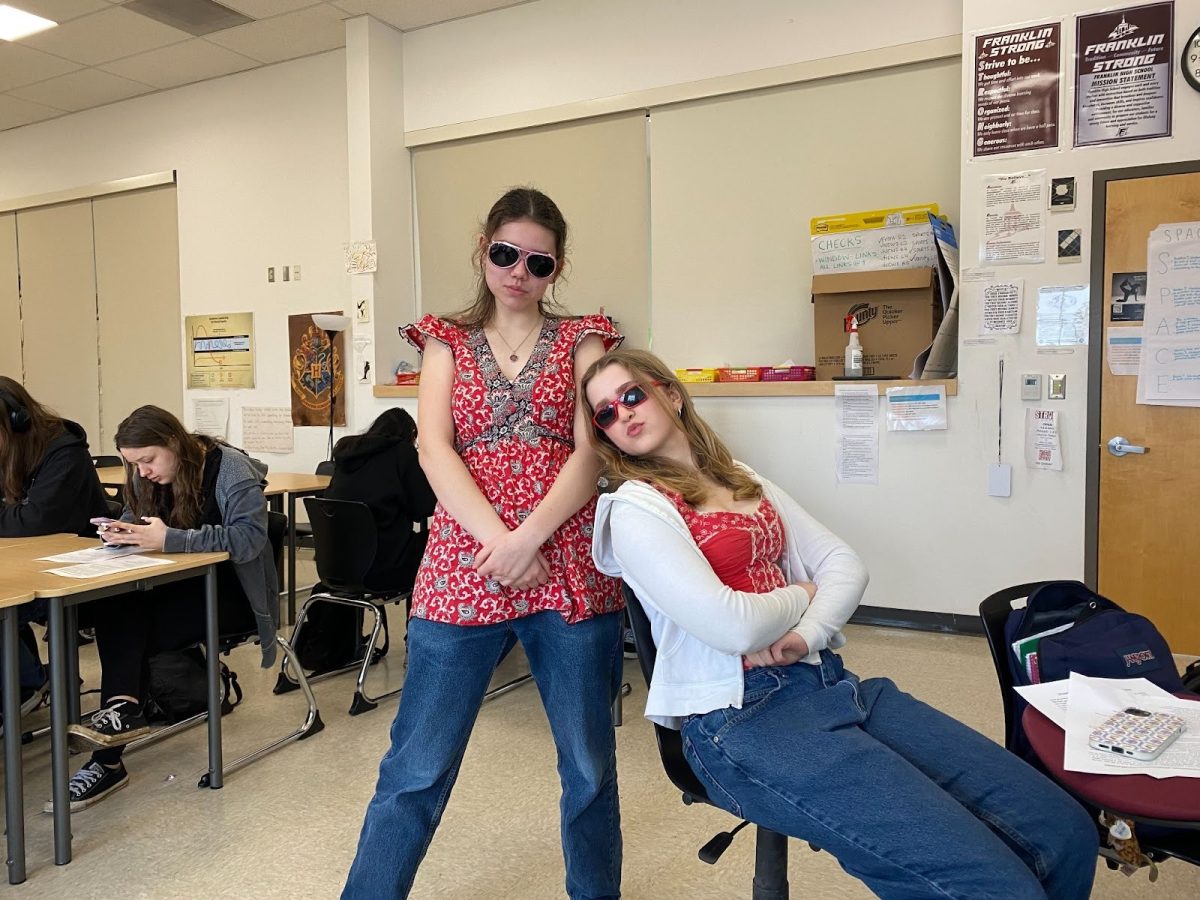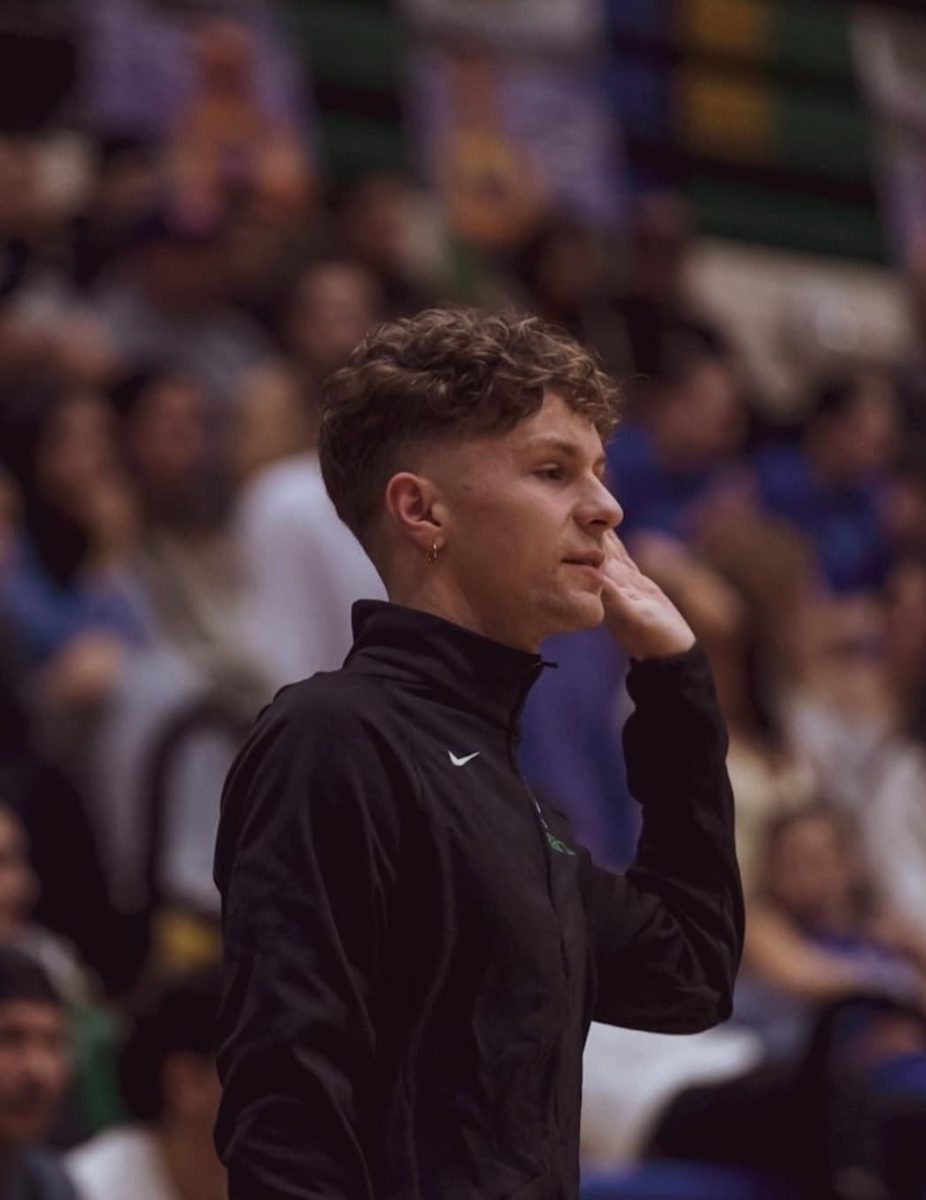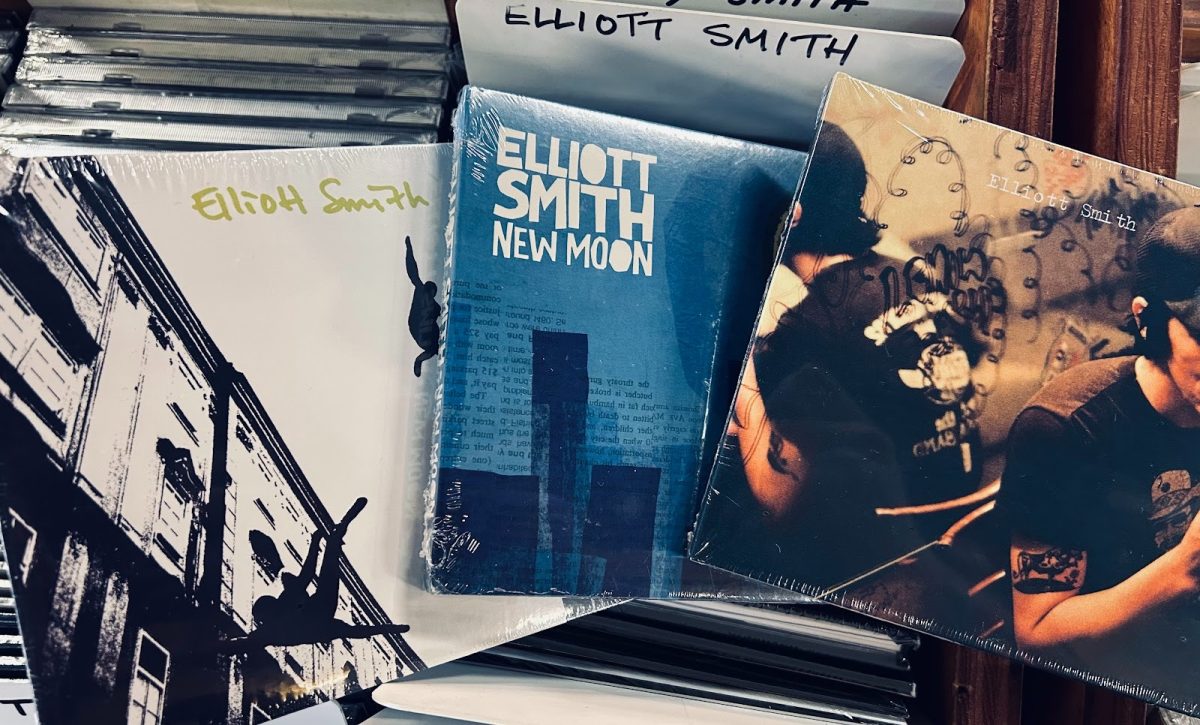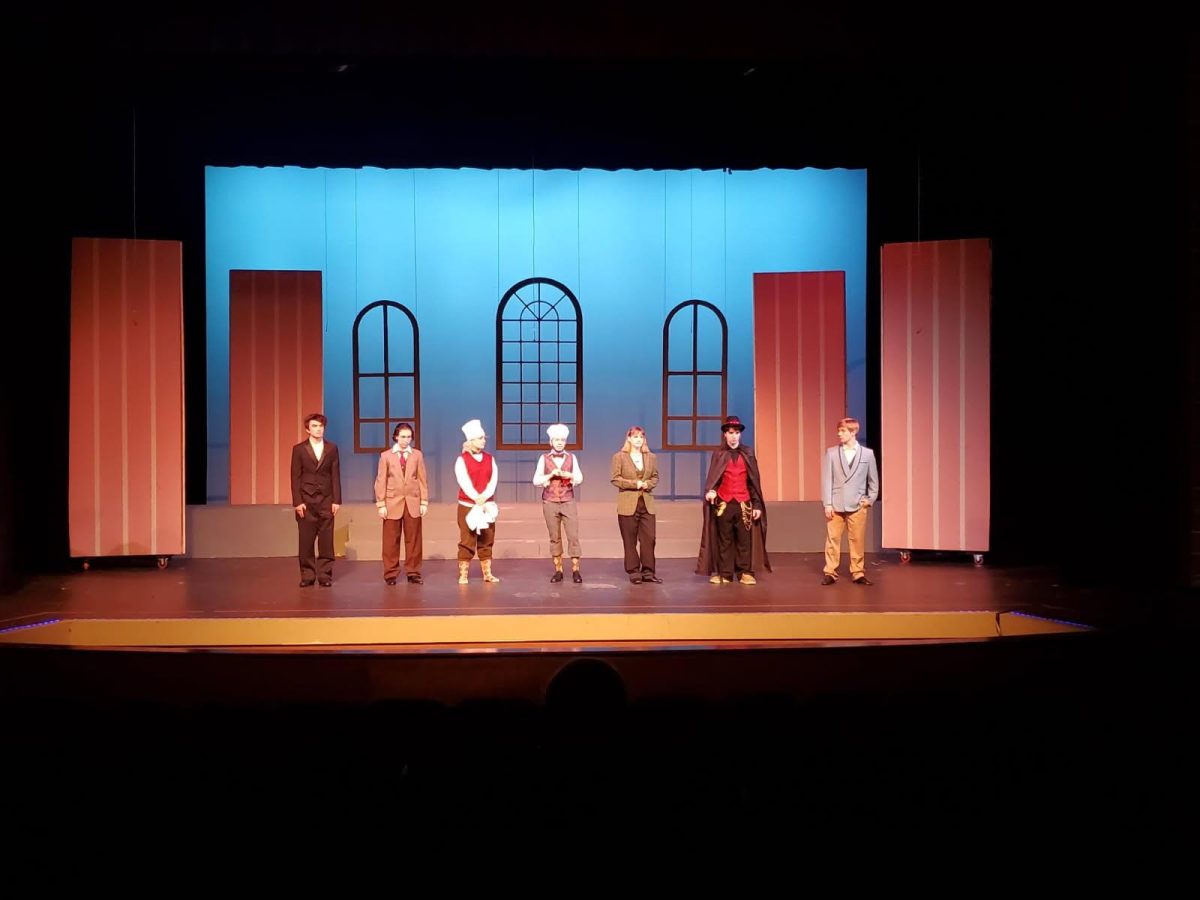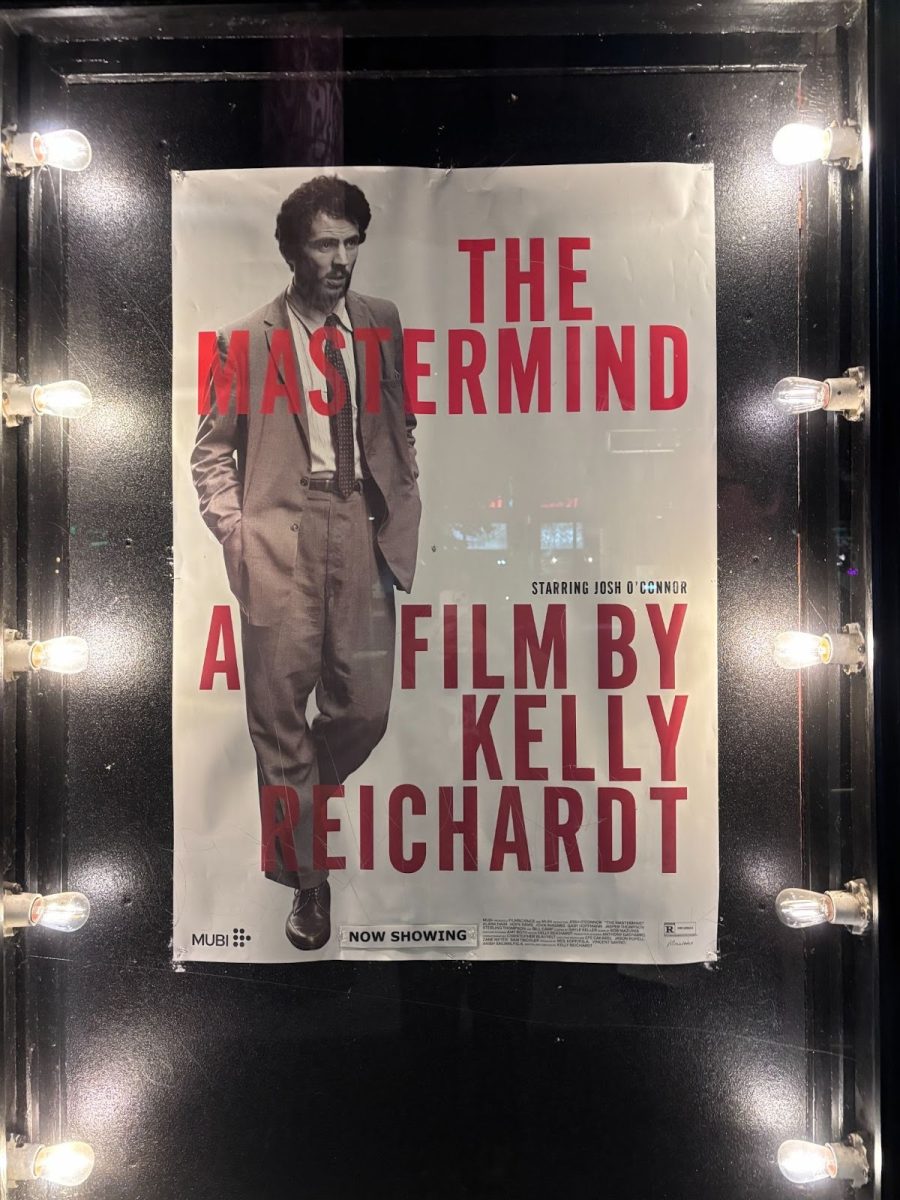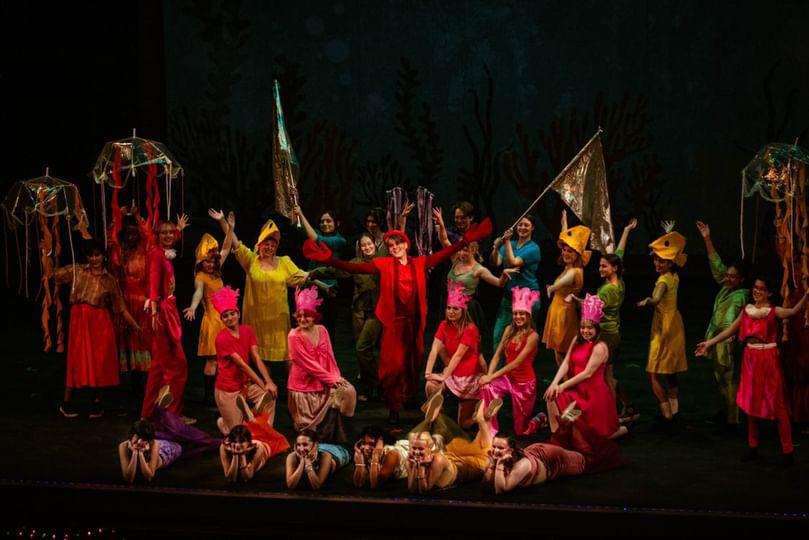When I walked into the Franklin Theater on the opening night of “The Little Mermaid,” I was cautiously optimistic about the show. How would it come together after a month on strike with no rehearsals? How would the crew pull off technical challenges such as storms, an ocean setting, and the multiple boats used in the show? On top of these, my biggest worry was that the show in general, which is based on a children’s movie, would fall flat in a high school setting. I had faith in Franklin’s theater department, but the show seemed impossible. However, I was pleasantly surprised by an impressive performance I could easily get invested in, and was happy to see it repeatedly!
The musical follows the classic story of Ariel, a mermaid who falls in love with a prince who lives on land. She makes a deal with the sea witch Ursula, trading her voice for legs in order to be with Prince Eric. But, if she doesn’t kiss Prince Eric by the end of three days, she’ll lose her legs and be bound to Ursula forever. Despite a charming romance, Ursula and her eels, Flotsam and Jetsam, thwart Ariel at every turn. By the end of the third day, the prince still hasn’t kissed Ariel, despite his desire to marry her. Ultimately, Ursula, Ariel, and King Triton come together for a dramatic scene that results in Ursula’s death.
There are a few big differences between the movie and the musical, the biggest being that Ursula never turns into a human to marry Prince Eric. I found that Ursula’s more in-depth backstory and additional scenes of Eric and Ariel falling in love resulted in further character development that made the show more interesting, as well as a more convincing love story. One change that made the show especially compelling to watch night after night was that Prince Eric doesn’t fall for Ursula, and instead chooses Ariel even without her voice. The fact that Eric wants to marry her for who she is, instead of marrying Ursula, is what makes their love feel more genuine.
The show was originally set to start on Nov. 3, but the opening weekend was interrupted by the Portland Association of Teachers strike, resulting in school closures that postponed rehearsals and shows. Some actors used this break to polish their lines, but most found that they forgot to practice, making the process more stressful. It also drastically extended the time commitment; the show closed on Dec. 9 when actors and crew originally planned for the show to end on Nov. 11.
As I talked to those involved with the show, the vast majority said that the most difficult aspect of the production was the time commitment. “I love being here [at the theater], but ever since auditions and callbacks I’ve been here since 6:30 every night, it feels like,” said V Goetz, who played Ariel’s sister Attina. Goetz did add that, despite the time commitment, the people in the Franklin Theater community made it worthwhile.
Some actors actually felt that the strike made the show better, such as Logan Markwell, who played King Triton. “It was amazing how we came back after the strike and did it better than we had ever done it before,” Markwell said. He explained that the extra time gave the actors and crew a chance to “step away, look at it, and then come back to [the production] with a fresh mind and more energy.” Regardless of how the strike affected them, everyone seemed to pull through and adhere to the sentiment, “The show must go on!”
I liked the show, but nothing’s perfect. What bothered me the most while watching were technical difficulties. There were a few instances of the microphones crackling, which was a little distracting but didn’t bother me too much. I thought the big dance numbers were fun, but they could be a little chaotic, especially on opening night. I do think that as the show progressed and the performers got back into the swing of things after the strike, the dances got cleaner — “Under the Sea,” which involved some of the show’s most difficult choreography, became more polished over the course of the show’s run.
After watching multiple shows, a few moments stood out to me each night. To start, any scene with Ursula was a favorite of mine. Both Julia Dixon and Josephine Mitchell played the cunning, evil sea witch and had such great energy on stage. “It’s fun to play a character who’s evil,” Mitchell said. Watching them on stage, I could tell how much fun both actresses had with the part. It was quite a funny show as well, one highlight being Truman Rhoads playing the role of Sebastian, Ariel’s tutor and guardian. Truman’s physical acting and expressions were hilarious.
Aside from the actors, what really brought the show to life was the attention to detail in the sets, lighting, and sound. The set pieces were all cool, but what blew me away was the giant ship made for the show. I was shocked by how lifelike Prince Eric’s ship was, including platforms for the cast to stand on, and a mast that could be raised and lowered. The show also had many props that added to the world and story, such as King Triton’s trident.
The lighting and sound were also standout, from a splash sound effect when Eric threw a fork, to a storm sequence, complete with simulated lightning. Additionally, costumes played a big role in creating the world of “The Little Mermaid.” Designing mermaid tails for the stage isn’t exactly easy, so I was especially impressed by Ariel’s, King Triton’s, and the Mersisters’ costumes. My favorites had to be the costumes for Flotsam and Jetsam, and the Seagulls’ costumes. The eels’ outfits were complete with lights in their hair, representing their electrical abilities. The Seagulls were wearing coordinated outfits with vests over feathered shirts made to look like wings, with yellow tights under their skirts to complete the bird look. The tech crew did an amazing job on this show, and there were so many awesome components that I was very impressed by.
In addition to seeing the show, I got the opportunity to go backstage and interview members of the cast and crew. When asked what their favorite part about Franklin Theater was, the answer was overwhelmingly “the community!” Franklin Theater really does have a wonderful sense of community, and with that comes mentorship.
“The Little Mermaid” was Silvia Tanner’s first production as an official member on the lighting crew — though she did work spotlights at Winter Dance last year. She was trained by the head of lights, Robin Ward, and is hoping to learn how to program the light board during this year’s Arts Alive production. “Even when I was doing the board for the show, Robin was still guiding me through everything and giving me cues,” Tanner said. “[The crew are] all very nice and supportive.”
Quinn Lawson learned to stage manage through a lot of learn-as-you-go moments, but also through the guidance of Audrey Lynch, another stage manager. “She leads by example a lot,” Lawson said. “I think she does a good job at teaching.” Most people coming in don’t know much about how to put on a show, especially the technical aspects. Franklin Theater provides a supportive and comfortable environment to learn more about theater through hands-on experience.
If I gave “The Little Mermaid” musical a rating out of five stars, I’d give it a four and a half. I saw it five times and had fun every time. I think it was a stellar show, and I’d definitely recommend seeing other shows from the Franklin Theater department, such as the spring play or next year’s musical — they never disappoint. Congratulations to everyone who was involved in this wonderful production!












